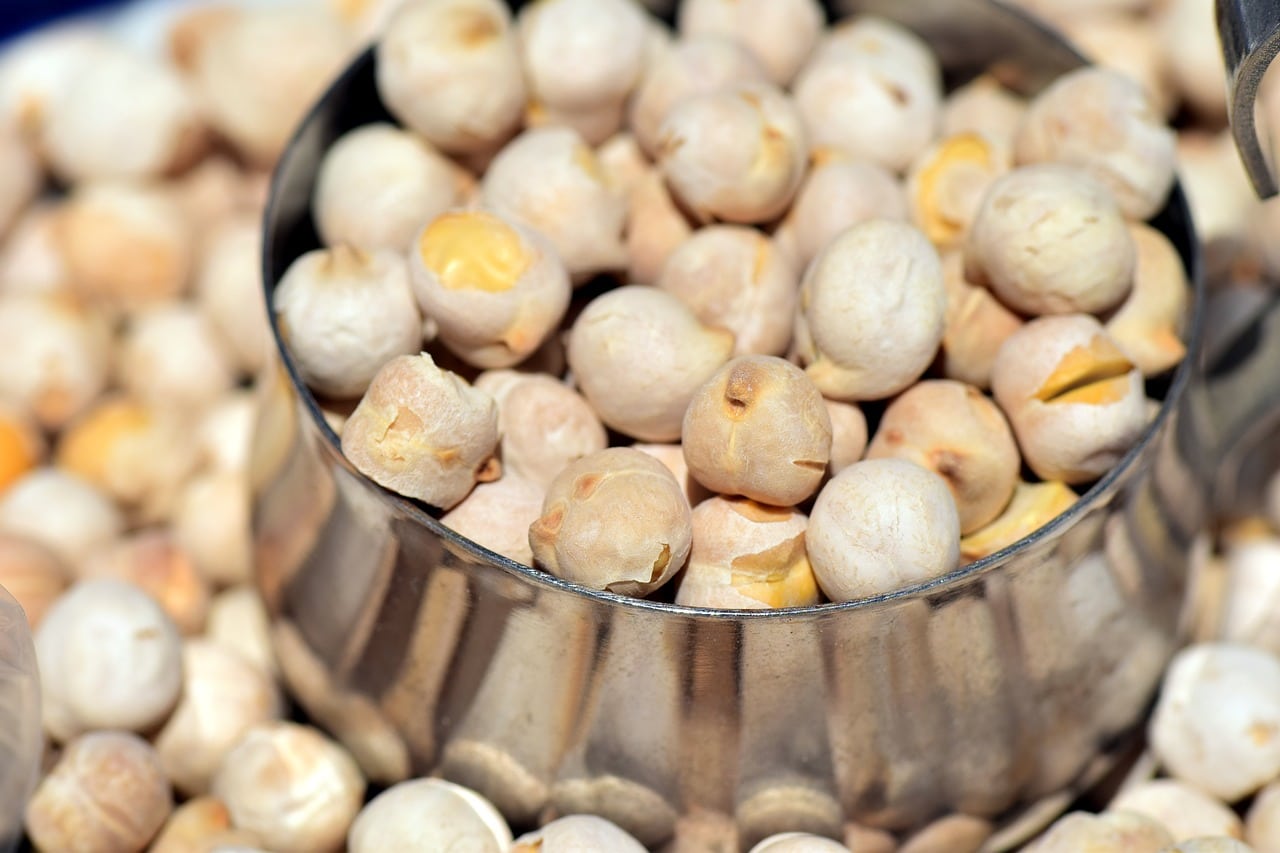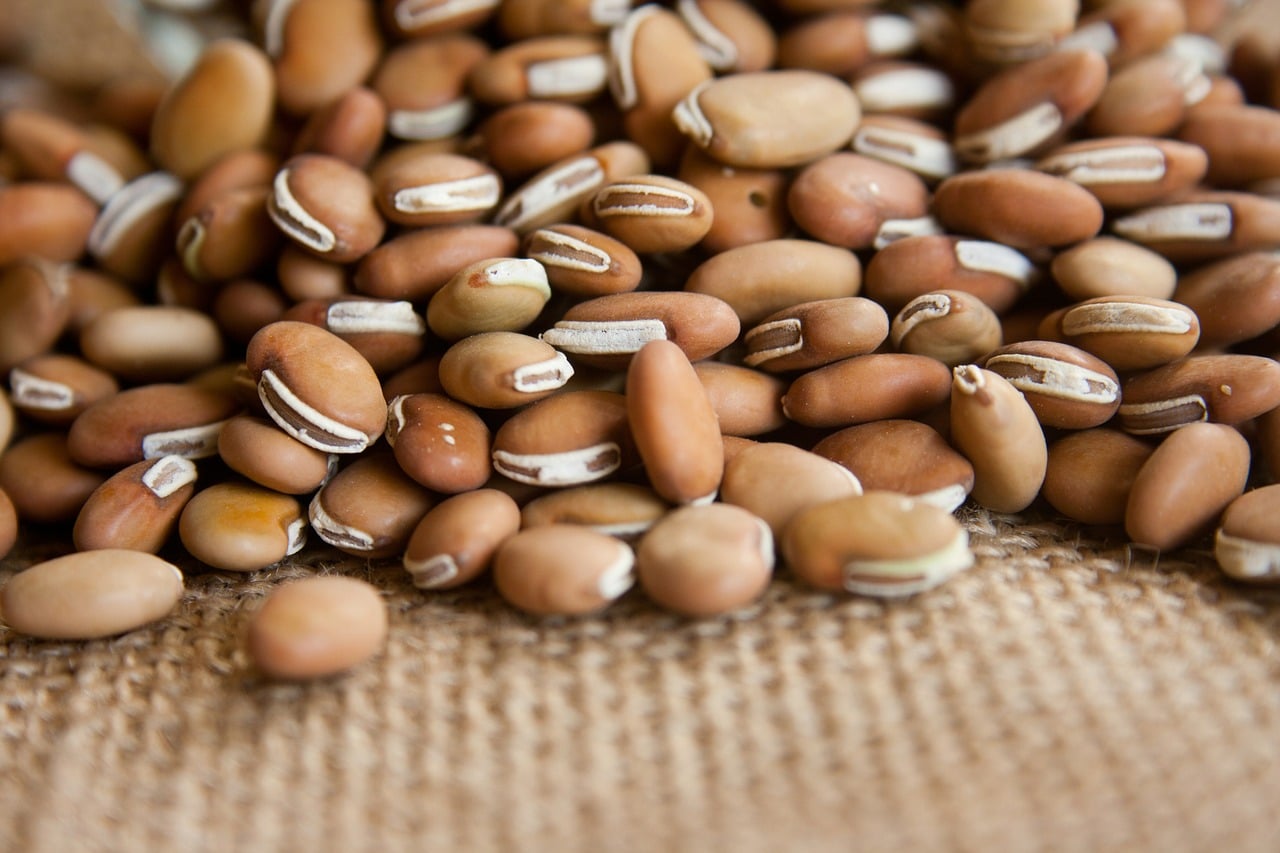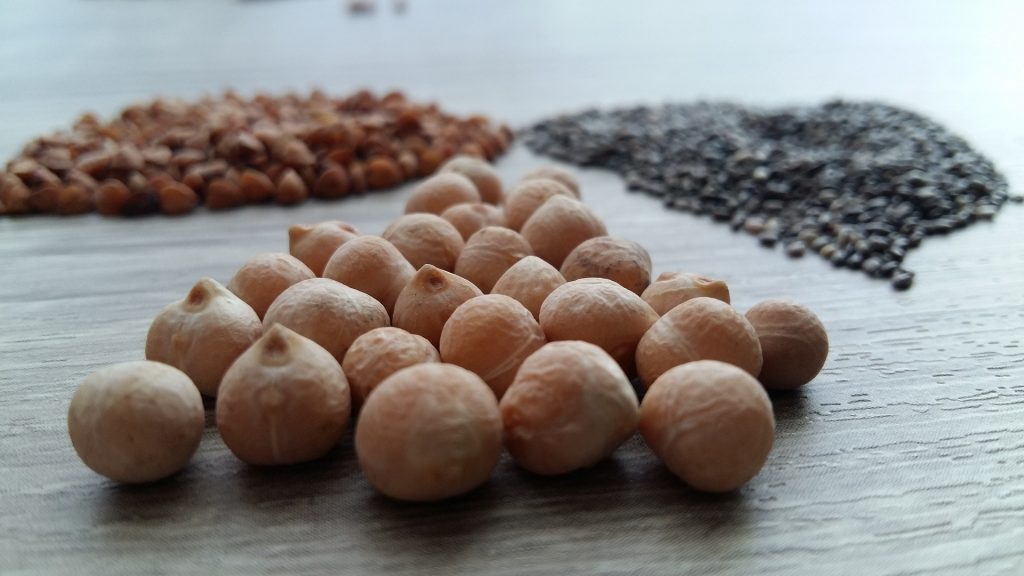Lentils are available in different variants, all of which have a distinct taste and impart a different flavor to the dish. For example, red lentils are much sweeter, whereas both green and black lentils add a certain peppery note to the dish’s flavor. Other variants such as brown and yellow lentils are somewhat sweet and nutty and can be a healthy and delicious addition to your soups and salads.
Let’s take of look at some pulses that are widely available across the world
Types Of Pulses
1. Chickpeas
Chickpeas are one of the most popular variants of pulses, which are themselves found in two different variants, namely desi and Kabuli, both of which have different shapes and sizes. Chickpeas are used to make a long list of dishes that have a distinct flavor and nutritional essence. Apart from that, due to their high vitamin, mineral and fiber content, both of these chickpea variants play a significant role in bringing nutrition to your diet. In fact, the protein-rich nature of chickpeas makes them a perfect alternative for meat. So if you follow a vegetarian diet, chickpeas might be perfect for your diet for muscle growth and energy production.

Also Read: Top 10 Benefits Of A Protein-Rich Diet | Sources Of Carbohydrates
2. Pigeon Peas
This perennial legume was domesticated in the Indian subcontinent about 3500 years ago, adding to its historical significance. Just like chickpea, this variant is also an excellent source for protein and amino acids, but, along with that, pigeon peas also contain an adequate volume of complex carbohydrates, which are further responsible for an improved blood glucose level, thus ensuring that an appropriate amount of energy is produced in the body for the organs to do their work efficiently.
3. Lupins
As compared to the previously discussed variants of pulses, lupins are a much exotic type of pulses that are usually cultivated in Australia and South-Western Europe. Fun fact, ‘lupin’ is a word that means ‘wolf’ in Latin, it was named so because many people believed that a lupin plant depleted essential nutrients from the soil. However, just half of it is true, for this legume plant also increases the fertility of the soil by channeling nitrogen from the air into the soil. In addition to the entire nutrient-list that other variants of pulses contain, lupins also have a healthy amount of distinctive chemical compounds known as alkaloids. An energy-producing compound such as that can make lupins a great addition to your diet.
4. Dry Peas
Dry pea, along with chickpea, is a commercial legume that is extensively consumed all across the world. There are two different variants of dry peas, namely green and yellow (based on their appearance). Loaded with a healthy dose of vitamin C, these peas have a powerful antioxidant quality associated with their consumption, which further makes them a great free-radical scavenger. Over 25% of their weight is pure protein, and they are low in fat as well, thus there consumption ensures a healthy muscle improvement along with the cutting down of unnecessary fat.
5. Cow Peas
This variant of pulses, thanks to its tolerance for sandy soil and low rainfall, is considered one of the most important crops grown in the African plains. As a modest yet versatile crop, growing cowpeas might have a weed-suppressing effect, thus making them a sustainable choice of crop. Moreover, these peas are also considered to be a nutritional package, for it is loaded with fiber, minerals like zinc, iron, and calcium, and they are also a great source for antioxidants.

6. Bambara Beans
Bambara beans, unlike the other variants, are grown underground, a trait that is unique to them. Originated from West Africa, these beans can be eaten fresh or after being boiled. Furthermore, Bambara is a low-cost farm resource that can grow efficiently in harsh climates, especially in places where other crops fail to grow.
Also Read: Protein Rich Food For An Indian-Vegetarian Diet





